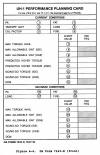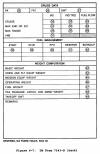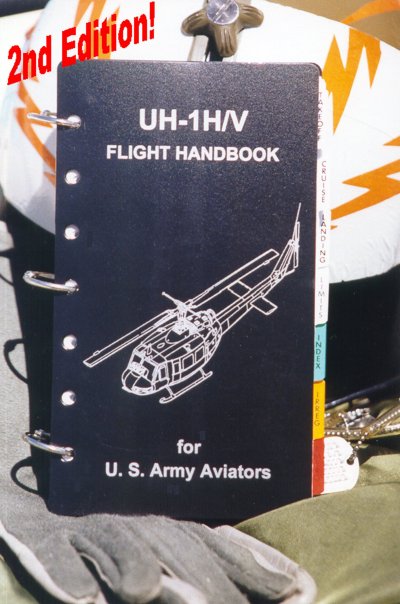Turning a sea of data into data
you can see...
Problematic Performance Planning
Card (PPC)
Today’s military aircraft
Operator’s
Manuals and Checklists are prepared per military specifications
(MIL-PRF-63029E) and serves primarily two groups of users; engineers and
combat aviators. The Operator’s Manual data presentation format
suffices technical and engineering applications, however, this format,
particularly performance data, is fundamentally user unfriendly to
the aviator and doesn't lend itself to convenience required of high
risk missions with truly dynamic operational parameters. This
inherent user unfriendly nature of the data necessitates pre-mission
planning well in advance, hence, the Performance Planning Card (PPC).
  Completing a
PPC affords
aviators the opportunity to assess aircraft limitations for a given set of
ambient conditions and mission constraints. Although, the PPC is not required for every flight, it is prudent to do so. Although
task accomplishment has been facilitated by the use of microcomputers (PPC
software programs, PDA’s etc.). The completed PPC is only good for
the planned conditions. Completing a
PPC affords
aviators the opportunity to assess aircraft limitations for a given set of
ambient conditions and mission constraints. Although, the PPC is not required for every flight, it is prudent to do so. Although
task accomplishment has been facilitated by the use of microcomputers (PPC
software programs, PDA’s etc.). The completed PPC is only good for
the planned conditions.
“The account of Black Hawk crashes shows that it’s critical for aviators
to clearly understand how power-limited aircraft will perform during all
phases of assigned missions. The Army continues to deploy and operate
in demanding environments… When we arrive in a high altitude
environment, such as Bosnia; a hot
desert environment like Kuwait; or a hot, high environment such as Fort
Irwin, we find ourselves operating in vastly different conditions.” BG
James E. Simmons, FlightFax Oct 2001
Today’s Army Aviation performs a
wide variety of challenging missions with truly dynamic operational
parameters, rendering the PPC obsolete. Re-computation of a
PPC,
under certain circumstances, may be at best impractical and at worst
impossible. Although the Operator’s Manual is always available in the
cockpit, the data or information may not be sufficiently accessible.
The document is impractical for everyday aviator use.
For example,
enroute mission changes. "Do I have enough fuel to accept this
request?"... "Do I have enough power available under ambient conditions
at the PZ?"... "Will Directional Control Margin (DCM) pose a
problem?"... "Under these conditions, how fast can I fly with some
reasonable safety margin?"...
The Performance Planning Card (PPC) method is tedious, time consuming
and human error prone due to the awkward, user-unfriendly Operator's
Manual (-10) performance data presentation.
Microcomputer
PPC devices, Portable Flight Planning
Systems (PFPS), even on-board Flight Management Systems (FMS) help,
however, are subject to damage, power loss and failure. These
devices
are no substitute for a manual fallback recovery alternative measure.
WingNotes™ Quick Reference
Handbook
The practical solution is a
Pilot’s Operating Handbook (POH) or sometimes called Quick
Reference Handbook (QRH). The Army has indirectly acknowledged
the need for handy access to critical performance data evident by attempts
to add tabular data to the Checklist (-CL). For example, Maximum
Torque Available, Hover Torque Required, etc. However,
-CL
performance data tables are not suitable for combat aviator use and
incomplete data ultimately requires reference back to the user-unfriendly
Operator’s Manual (–10).
WingNotes™
International Quick
Reference Handbook (QRH) is essentially a blend of Aircraft
Operator’s Checklists (-CL) procedures with comprehensive tabular
performance data. In other words, a system of publications derived
from authoritative sources, developed by a combat aviator specifically
tailored for operational combat aviator use. Particularly,
WingNotes™
Quick Reference Handbook (QRH), and PPC
Takeoff Wall Planner Posters etc.
WingNotes™
International Quick
Reference Handbook (QRH) documents are so comprehensive that it’s like
having a PPC for all occasions and renders the PPC, the
process, the software, the paradigm obsolete. U. S. military use of
WingNotes™
International publications will significantly enhance
aircraft Operational Readiness, Mission Effectiveness, Safety and
Economy (Total Ownership Costs (TOC) reduction).

Study Guide and Quick Reference, 2nd
Edition, includes Metal (MB) and Composite (CB) Main Rotor Blade aircraft.
ISBN 1-878595-02-4, Ringbound, $90.00 USD, Available Now!...
This handbook evolved from the
author’s personal notes into this comprehensive Quick Reference and
Performance Supplement. It is published in the 2nd Edition.
Civilian customers find this handbook particularly useful for UH-1H fire
bucket missions, game relocation, logging, powerline and power pole
placement, aerial surveying, medevac and law enforcement to name a few.
The Maine
Forest Protection Service has recently selected the UH-1H/V Flight
Handbook For U. S. Army Aviator’s as standard equipment for their UH-1H
fleet.
This handbook demonstrates a fully
developed, fully integrated WingNotes™
International solution for superior
military Flight Technical Support.
WingNotes™
International can provide
Commercial Off The Shelf (COTS) publications for U.
S. military operational use, or provide consultation services to develop
custom Flight Technical Support Solutions.
|
 | |
|

 WingNotes™
International
is uniquely capable of providing these posters for other aircraft “on the
turn of a dime”. For example, we can provide a similar set of posters for
the AH-64A or AH-64D within 10 business days of receiving the raw
engineering hardcopy graphic data.
WingNotes™
International
is uniquely capable of providing these posters for other aircraft “on the
turn of a dime”. For example, we can provide a similar set of posters for
the AH-64A or AH-64D within 10 business days of receiving the raw
engineering hardcopy graphic data. | |
|
|
|
|
|
|
WingNotes™
PPC WALL PLANNER Takeoff Quick Reference Posters

 PPC Wall Planner Takeoff Quick Reference Posters,
our newest
publications,
are
24” x 36” (or 36” x 48” oversized)
Color
posters, single side imaged on 60
lb. laser paper with encapsulated lamination for durability. These
posters contain minimum essential performance planning data to assess lift
capability and are perfect for flight operations planning, simulator, IP
briefing, training or conference rooms. They’re Ideal for unit
commanders, S-3 and other staff officers.
PPC Wall Planner Takeoff Quick Reference Posters,
our newest
publications,
are
24” x 36” (or 36” x 48” oversized)
Color
posters, single side imaged on 60
lb. laser paper with encapsulated lamination for durability. These
posters contain minimum essential performance planning data to assess lift
capability and are perfect for flight operations planning, simulator, IP
briefing, training or conference rooms. They’re Ideal for unit
commanders, S-3 and other staff officers.
 UH-60A/EH-60A and
UH-60L specimens contain
Torque Ratio, Maximum Torque Available (30 Minute Operation) and
Hover Torque Required data tables. In addition, Condition/Action
Flow Diagrams (C/AFD’s) provide concise definitions, instructions,
data basis and torque adjustments, etc.
UH-60A/EH-60A and
UH-60L specimens contain
Torque Ratio, Maximum Torque Available (30 Minute Operation) and
Hover Torque Required data tables. In addition, Condition/Action
Flow Diagrams (C/AFD’s) provide concise definitions, instructions,
data basis and torque adjustments, etc.
Available now!...
| | |



